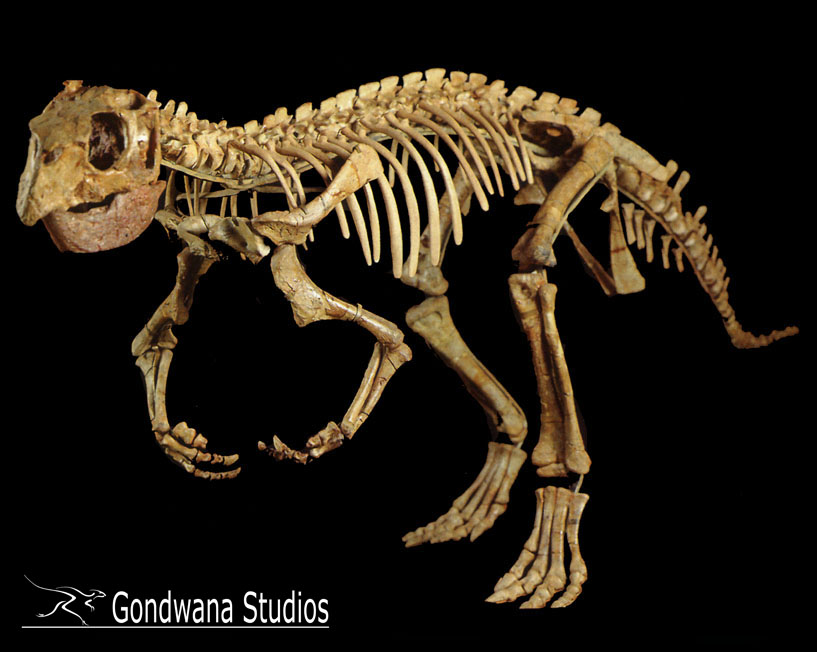 Although it lacks the impressive horns and neck ornaments found in Triceratops the Styracosaurus and other horned dinosaurs, many features Psittacosaurus show that this is one of the first members of this group. All of these dinosaurs, known as ceratopsian, had a sharp beak and curved at the end of the jaws, similar to that of a parrot. The peak was covered by a stratum corneum must be sharper than ideal for slicing stems and leaves plant.
Although it lacks the impressive horns and neck ornaments found in Triceratops the Styracosaurus and other horned dinosaurs, many features Psittacosaurus show that this is one of the first members of this group. All of these dinosaurs, known as ceratopsian, had a sharp beak and curved at the end of the jaws, similar to that of a parrot. The peak was covered by a stratum corneum must be sharper than ideal for slicing stems and leaves plant. The top of the peak was formed by a special bone called the rostral bone , which is specific to this group of animals. Other features that unite the Psittacosaurus the horned dinosaurs are some emerging ornaments on the neck, consisting of a small bony det'ras protruding from the skull, and strange sharply-pointed on the cheek bones. It is not known exactly what role these bones meet, but are in all horned dinosaurs. Might have served for the fights, which rivals escajaban heads together and lunged at each other in a test of strength. These struggles might have been important in the fight for mating or territory.

A herbivore elegant
Unlike other horned dinosaurs later Psittacosaurus the animal was a small, light structure, who was only with the hindquarters. The hands were long and slender fingers ending in sharp claws and a peqeueñas he used to collect food. The hind limbs were long and slender, which suggests he could run well. The Psittacosaurus chewed food an unusual way. Instead of simply moving the jaws up and down like scissors, like other dinosaurs, the lower jaw could slide back and forth against the upper teeth, producing an efficient movement of grinding.
Piedras triguradoras
Several skeletons Psittacosaurus contain an abundance of highly polished pebbles in the abdomen. It appears that the Psittacosaurus deliberately swallowed stones which are then embedded in the walls of your stomach. The movements of the stomach muscles were the stones grinding food, thus facilitating the digestion. Scientists call these gizzard stones . The Psittacosaurus ornithischian is the only dinosaur which is known for sure that recourse to the gizzard, although there is some evidence that Stegosaurus did too. Gizzard were also found in the stomachs of some prosauropods, sauropods and theropods. Scientists know that stomach stones were used in this way because there are many modern birds, including chickens and ostriches, which also have gizzard.
 The Psittacosaurus is known from a large number of skeletons. Some, like we have above, are well preserved and provide very detailed information to scientists.
The Psittacosaurus is known from a large number of skeletons. Some, like we have above, are well preserved and provide very detailed information to scientists. SHEET
Gender: Psittacosaurus
Rating: Marginocephalia; ceratopsian; Psittacosauridae
Length: Up to 2 m
Height: 70 cm approx .
Period: initial Cretaceous, about 125-97 million years
Found: Mongolia, northern and western China, Thailand and central Russia .
Source: Larousse of dinosaurs.
0 comments:
Post a Comment